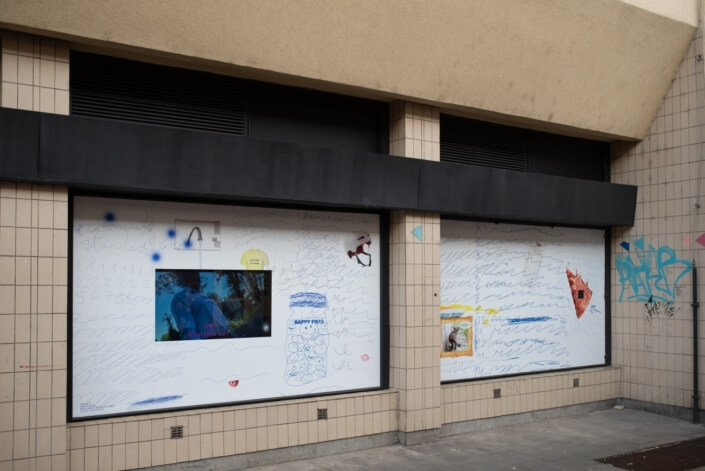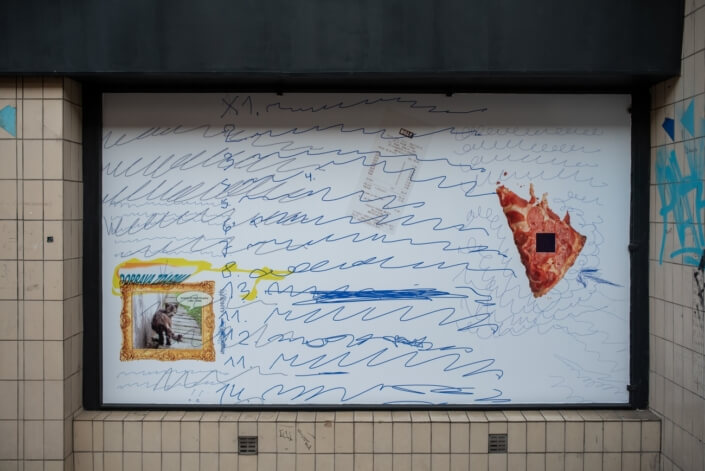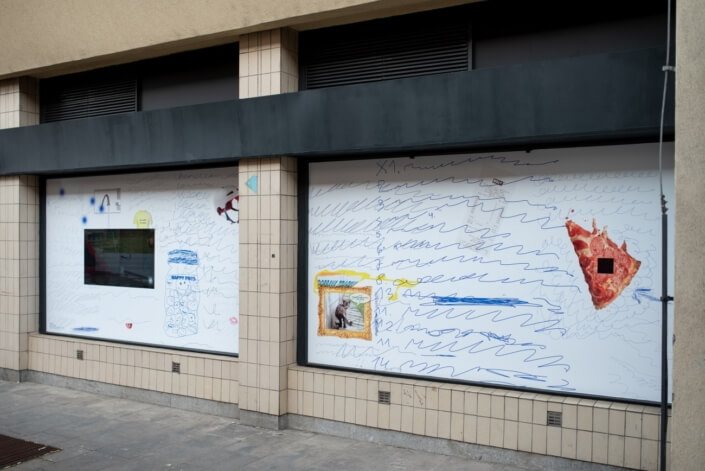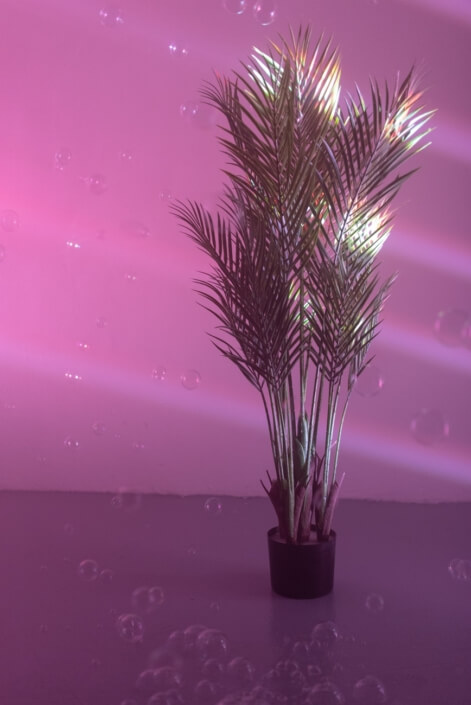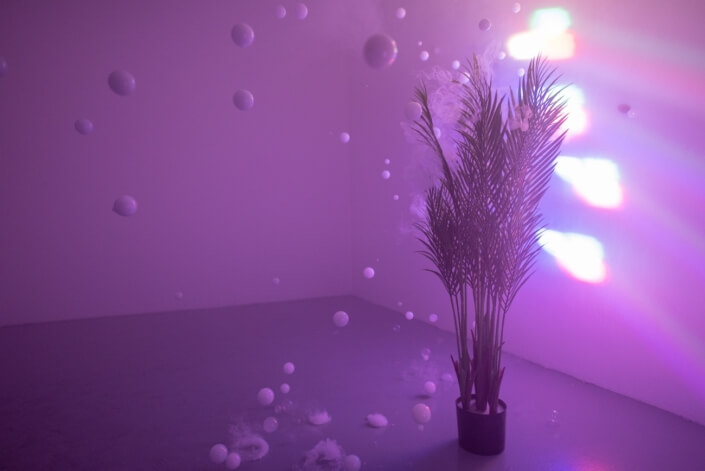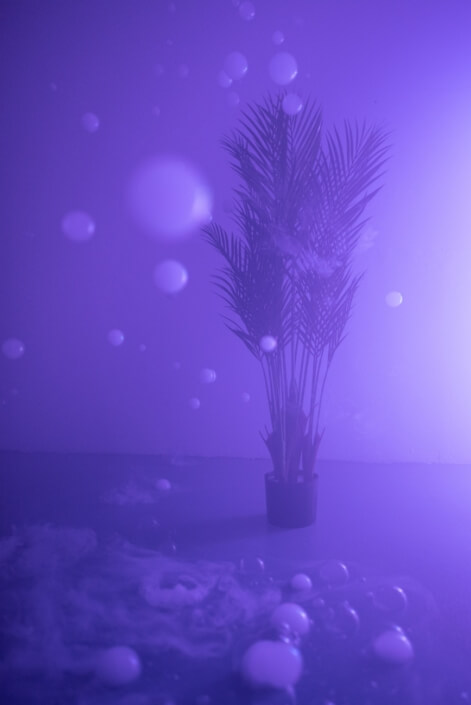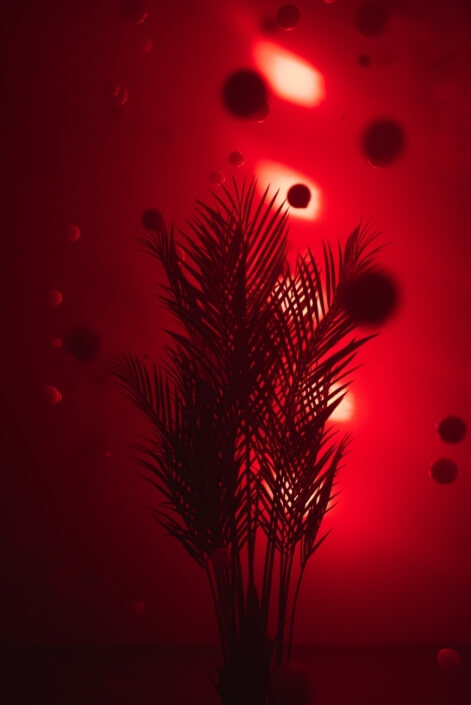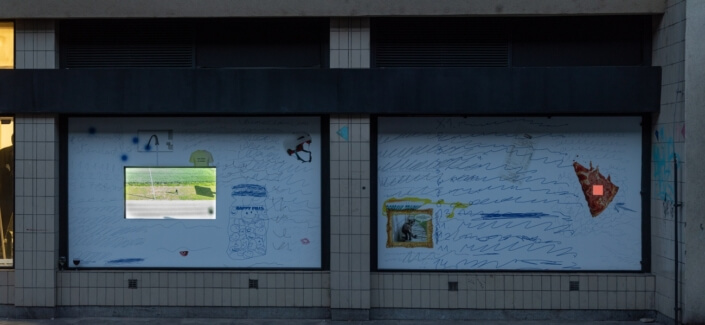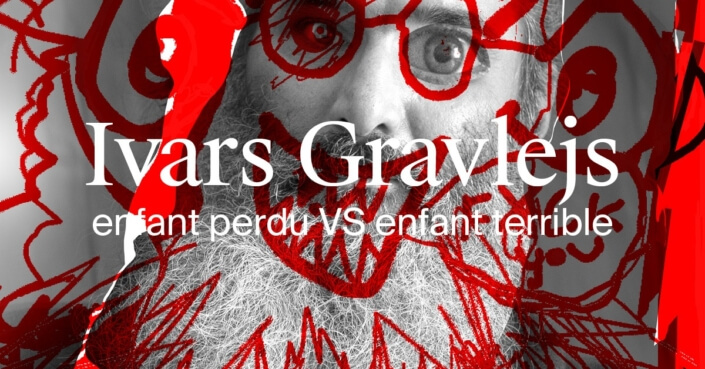enfant perdu VS enfant terrible
In the previous artistic work of Ivars Gravlejs, there is a subversion towards the system, authority, and seriousness in general. The means he uses for this artistic expression often resemble adolescent rebellious behaviour and lead to recessive, (self-)ironic, and provocative artistic outcomes. This approach is evident in the exhibition enfant perdu VS enfant terrible at the House of Art Ústí nad Labem. At the same time, the exhibition builds on Gravlejs‘ dissertation research at the Academy of Fine Arts in Prague on clowning and contextualizes within this phenomenon the work of the Russian artist Avdei Ter-Oganian, with whom Ivars was in personal and professional contact during Ter-Oganian’s Prague residency. First Ivars Gravlejs worked as Avdei’s assistant, later they collaborated on several exhibition projects (e.g., Shit in Art, Gallery „36“, Olomouc or Angle of perception of visual information in contemporary time, Gallery Kytka). Ivars also curated Avdei’s retrospective Fucked Up (Tranzitdisplay, Prague, 2014). As the artist himself points out, gradually their joint activities became so intertwined that people from art circles began to confuse their names – they thought Avděj, they called Ivars, and vice versa.
It was therefore natural that Gravlejs chose to map and contextualize Avdějev’s work as his main research goal. After all, destructive, unconventional, and humorous features (to some extent identical to the production of clowns) are one of the basic principles of both authors‘ thinking. In this context, they are often critical of institutional and social norms and show their resistance to authority (just as the clowns do in their concentrated form). Both authors work with different media. The predominant form, however, is that of performance, in which they act as protagonists or as authors of the conceptual essence of a work performed by other artists or friends. This conceptual approach is already evident in Ivars‘ photographic, and film works from his juvenile work in the 1990s. The ethos of a post-socialist country is documented to some extent in his early work, as is evident, for example, in his photographic treatment of soda and beer cans, which in his childhood world symbolized a connection to the Western world while serving as a valuable commodity (Ivars received his first camera in exchange for ten cans from his collection). Photographs from the Scream and Flash series (1995) from this period were included in the group exhibition Performance in Photography (Tate Modern, 2016). The principles he applied during his childhood and adolescence in Riga, Latvia, are evident in his later and current work – especially the emphasis on playfulness, audacity, and provocation in his performances, videos, installations, and photographs. Humour, as well as mockery, is also evident in the more serious-intentioned cycles. We would not look for humour in an activity as humdrum as shopping (Shopping Poetry, 2012-2019), or in an artistic series of camera photographs based on the research principle, where Gravlejs refers to one of the basic tenets of McLuhan’s media theory (The Medium is the Message, 2008). However, humour is characteristic of Gravlejs‘ work when interpreted and perceived appropriately. However, the artist also works with other principles applied in contemporary art – for example, appropriation, both of commercial photographs (Forevers, 2007), photographs of social network users (Latvian Boys and Girls, 2006), film sequences (PAT & MAT, 2011-present), or even film software. For example, in the video La-La (2007) he applied an effect in the software iMovies, the use of which he had to defend to the organisers of the festival where the work won the second prize. In addition to provocation, playfulness, and a certain amateurishness, a conceptual approach to working with the medium is evident in this work. Another characteristic element, which is also present in La-La, is the repetition of individual records or ideas in Ivars‘ artistic approach. In the context of Deleuze’s consideration of the principle of temporality and repetition in filmmaking, repetition does not imply a lack of artistic invention but could be considered one of Gravlejs‘ enduring and unceasing premises. By provoking and addressing randomly selected people-colleagues, the artist involves the wider public in his performances, for example in the series Excuse me, could you take a picture of me (2005). Also in the art project Mobile (2007), his performative approach encouraging participation is captured – he showed visitors to various exhibition halls a recording of the author’s pornographic film on a mobile phone. Childish or adolescent „naughtiness“ and defiant behaviour appear very often in the work of Ivars Gravlejs. In the exhibition enfant perdu VS. enfant terrible, he summarizes this approach in a newly created video collage and his work within the exhibition space. The author has adapted the external and internal space of Gallery 2 in the House of Art Ústí nad Labem to the presentation of his work despite epidemiological measures, and the exhibition is thus accessible to the audience within the public space. An integral part of the exhibition project is a performance, which, regarding the peep show, gives the audience a glimpse into the colourful world of expectations and disappointments of Ivars Gravlejs.
The text was published in a modified version in Flash Art Czech & Slovak Edition, No. 59
Photo: Filip Trubač
Graphic design: Adéla Bierbaumer
Layout: Ivars Gravlejs & Barbora Hájková
enfant perdu VS. enfant terrible
Ivars Gravlejs
Gallery 2, House of Arts Ústí nad Labem
11. 3. – 30. 4. 2021
Curator: Barbora Hájková

